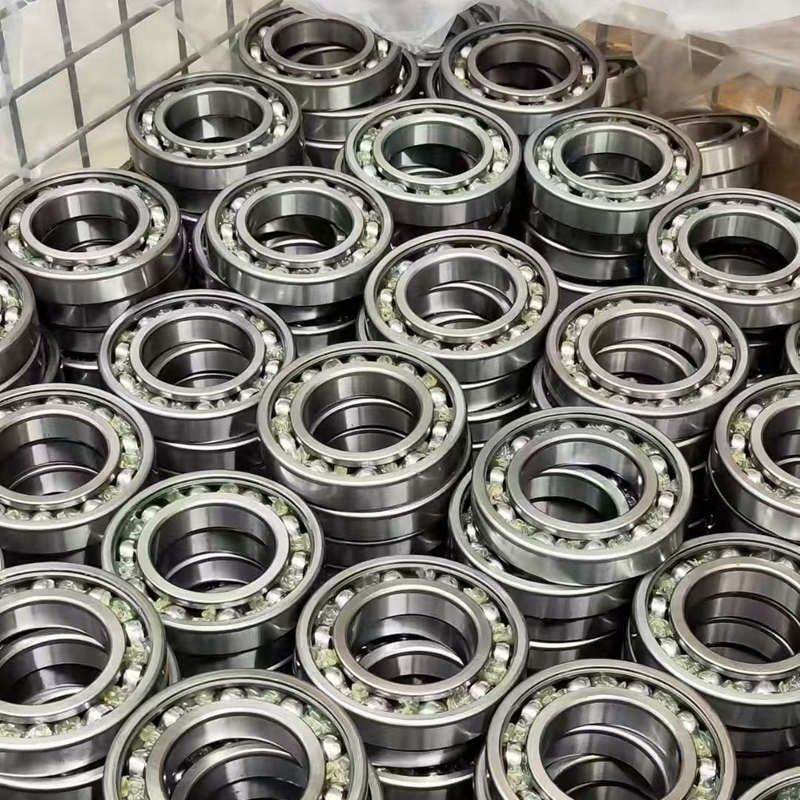Bearing Operating Temperature

Introduction:
Bearing operating temperature directly affects bearing performance: bearings enable smooth rotary or linear motion while carrying loads, and their temperature controls lubricant life, material properties, clearances, and overall reliability. This article outlines typical operating-temperature ranges, explains how to measure and interpret bearing temperature, identifies common causes and effects of abnormal heating, and offers practical measures to manage temperature and extend service life.
What Is Operating Temperature?
Operating temperature refers to the span of ambient temperatures—from the lowest to the highest—within which a device or biological system performs reliably without sustaining damage or degradation. If temperatures move outside this range, the system can suffer reduced performance or failure. Enclosure design, load, and other operating conditions affect the internal temperature and thus the effective operating range.
Typical Operating Temperature Ranges:
- Normal operating range (typical industrial ball and roller bearings): –30 °C to +120 °C (–22 °F to +248 °F). Many standard bearings with typical oils/greases operate reliably within this window.
- Continuous high-temperature service: up to about 150–200 °C (302–392 °F) with specialized greases and high-temperature materials (e.g., ceramic rolling elements, high-temperature steels). Above ~200 °C lubrication and material limitations become significant.
- Low-temperature service: down to –50 °C or lower is possible with special low-temperature greases and materials but requires attention to lubricant viscosity and clearance.
- Short-term or peak temperatures: bearings sometimes tolerate brief peaks above the continuous rating (for example during start-up), but repeated or prolonged excursions accelerate wear and failure.
Note: Exact allowable bearing operating temperature range depend on bearing type, cages, seals, lubricant, preload, and application-specific factors. Always consult manufacturer specifications.
How Bearing Temperature Is Measured and What It Means?
Measurement Methods:
Contact thermocouples, RTDs, infrared (IR) thermometers, thermal imaging, or temperature sensors embedded in housings. Choose method based on required accuracy and access.
Where to Measure?
Measure bearing housing temperature near the bearing, not the shaft surface. For high accuracy, place sensor on the bearing outer ring or housing close to the bearing.
Interpreting Readings:
- Stable temperature: after startup, bearings usually stabilize within minutes to hours depending on load and lubrication.
- Temperature rise: absolute temperature is important, but temperature rise above ambient (ΔT) is also used to indicate excessive heating. Typical acceptable rises might be 20–40 °C above ambient for many setups, but check specs.
- Trending: absolute values matter, but trends (steady increase over time) are often the earliest sign of degradation.
Estimating Bearing Life vs. Temperature:
- Bearing life is most commonly estimated by load and speed (L10 life), but lubricant condition and temperature can dramatically shorten actual life.
- Rule of thumb: each 10 °C increase in operating temperature can significantly reduce lubricant life (often used in lubricant life equations) — for example, grease life may be halved for every 8–12 °C rise depending on formulation.
- For accurate life prediction, use manufacturer’s lifetime models that include temperature, viscosity, and lubrication regime.
Practical Guidance to Control and Optimize Bearing Temperature:
- Use the correct lubricant: choose grease or oil with proper viscosity, base oil type, and temperature rating for the expected range.
- Maintain proper lubrication interval and quantity: avoid both under- and over-lubrication. Follow manufacturer’s relubrication schedule adjusted for temperature and duty cycle.
- Monitor temperature: install permanent sensors or use periodic IR/thermocouple checks. Trend data to detect gradual degradation.
- Ensure correct installation and preload: proper mounting, alignment, and correct interference fits reduce extraneous heating.
- Provide cooling or insulation: add oil cooling, forced air, or thermal barriers when ambient or adjacent components raise temperature.
- Protect against contamination and moisture: use correct seals, labyrinths, and clean assembly practices.
- Select appropriate materials for extreme temperatures: high-temperature steels, ceramic rolling elements, or high-temp cage materials and lubricants.
Conclusion:
Bearing operating temperature is a key determinant of bearing performance and life. Staying within manufacturer-recommended temperature limits, selecting the right lubricant and materials, monitoring trends, and addressing root causes quickly will maximize bearing reliability. For critical applications, use manufacturer guidance, perform thermal modeling if needed, and consider condition monitoring systems to detect and prevent temperature-related failures.

